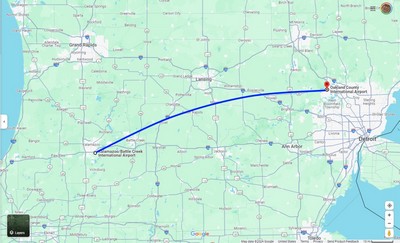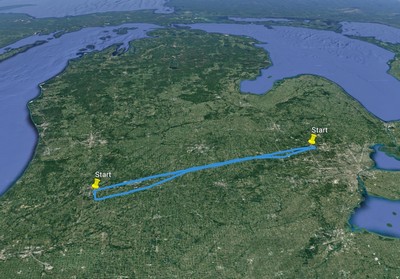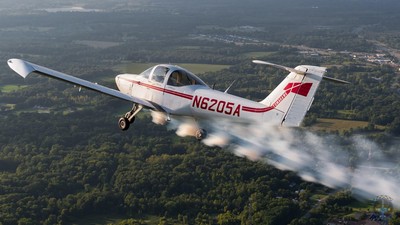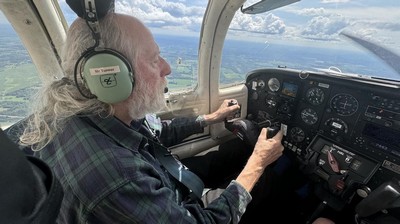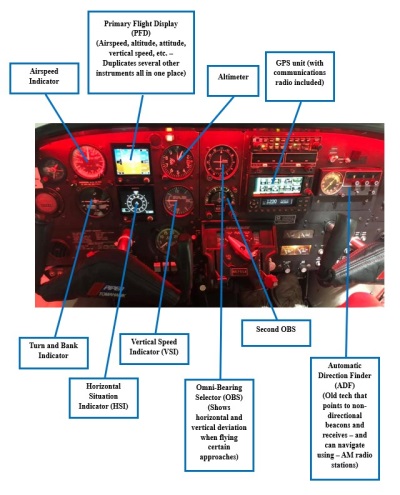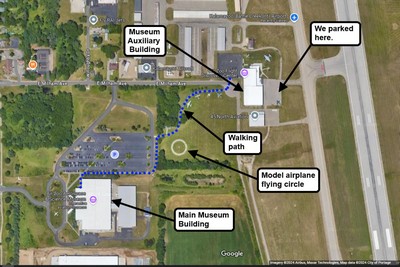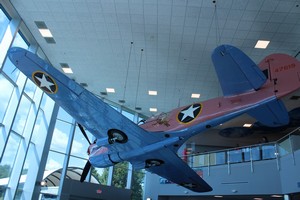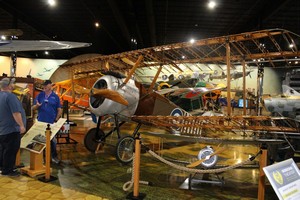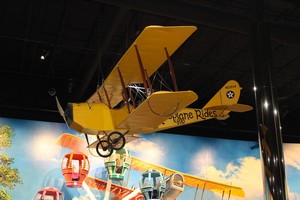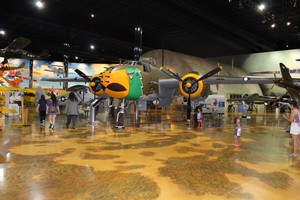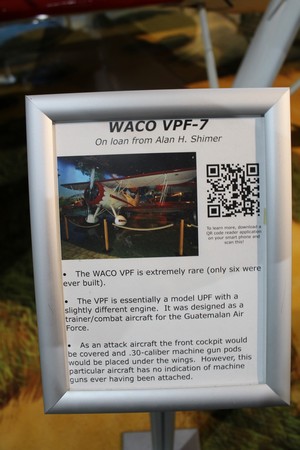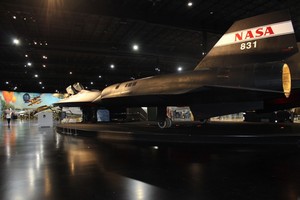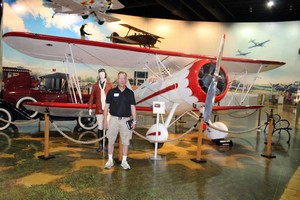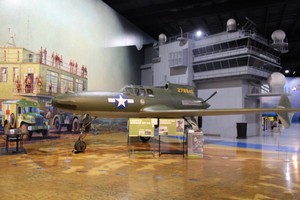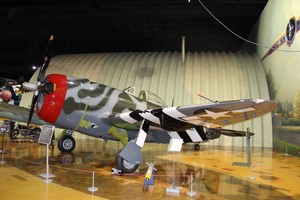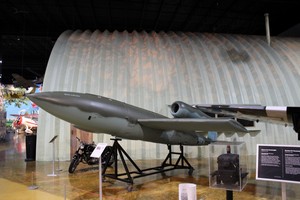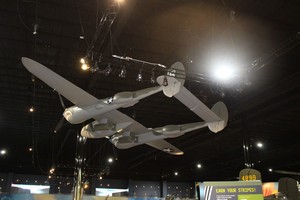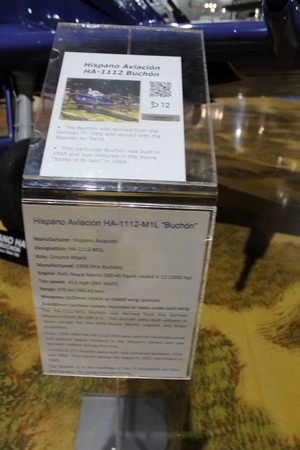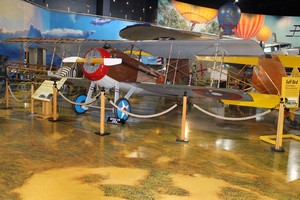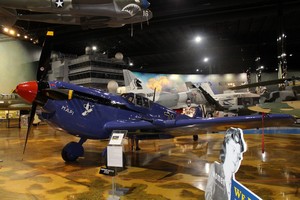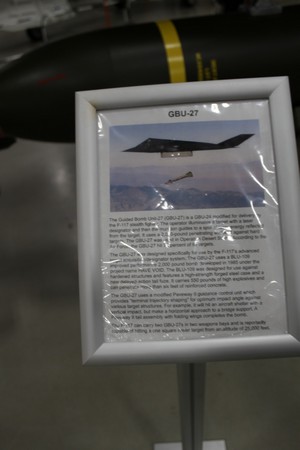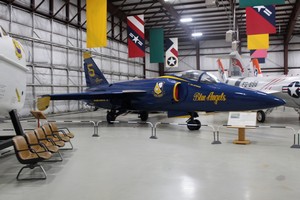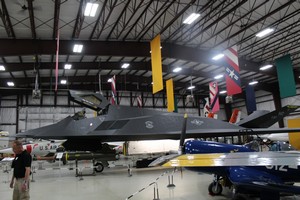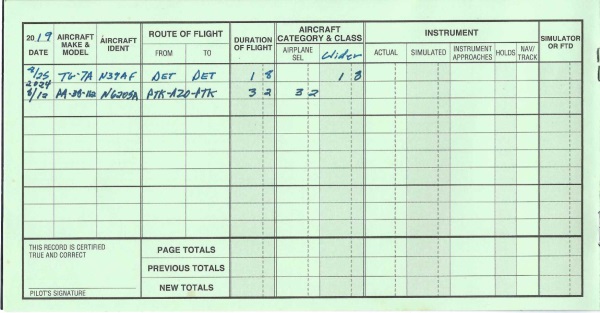We had contemplated taking a midnight flight to view the Perseids Meteor Shower from the air on Sunday night. But everyone was too knackered after the airshow to act on that idea. But I had added the Monday after the airshow to my trip to do a little sight-seeing with Steve, and maybe get a little flying of my own in. Steve suggested we could combine the two activities by flying out to Kalamazoo to visit the Air Zoo Museum of Aerospace and Science located there. Well, twist my arm!
The Flight
Today's flight was to be my second flying lesson. (My first was 5 years earlier as reported in my Blog entry of August 22 of 2019. At this rate, I'll probably get my license at age 106.) And rather than just doing random turns and climbs and dives as before, this would be a more practical flight between two specific locations.
FOD was otherwise occupied on Monday, so Steve picked me up at FOD's house, and drove us back out to Oakland County airport, where yet another of Steve's mounts, a Piper Tomahawk, had spent the night. That was to be our transport for today's flight.
Flight to Kalamazoo
The Tomahawk (Photo 52) is, in Steve's words, a "...reliable and affordable two-seat trainer. We bought it as a time-builder for FOD to fly in getting the 1,500 hours he’ll need in order to get to the airlines. He logs about 300 hours a year." No, it is not experiencing engine trouble in the photo. They installed a smoke generator in it just for shits and grins. I was at the controls (Photo 53) for most of the flight, finding my way via instruments as pre-programmed when we filed our flight plan. There were three instruments I had to watch simultaneously (photo 54). There was the Primary Flight Display that depicted a line that showed our flight plan route, and an arrow that showed our heading. If there were no crosswinds, the heading and the route would have been superimposed on each other. However, there were crosswinds, so we were pointing at some small angle to the line of the route. I had to keep the arrowhead on the route line, while "steering" with the ailerons to adjust the angle in order to maintain the arrowhead there. The second instrument that needed my attention was the Turn-And-Bank Indicator, which showed the angle of the wings to the horizon. I had to keep the wings level. And finally there was the Altimeter, which told me how high we were. That one I had to keep at 4,000 feet on our way out, and 5,000 feet on our way back. It took a lot of concentration keeping all of those parameters were they needed to be, and somewhat nerve-wracking. I would finally get us back on course, and then notice I that my left wing was low. I'd get that straightened out, only to find that I was a couple of hundred feet low. I climbed back to altitude, and discover I had wandered off course again. I hardly had a chance to look at the scenery. Steve assured me that those things would become second nature as one accumulated "stick-time", but I had a lot of hours to go before I would be able to relax.
Steve had hoped that there might be some clouds so that I could experience flying through them with no visual reference to the horizon, but it was not to be. On the way back we did get into the lower fringes of some wispy clouds for a minute or so, but it was nothing like flying "in the soup". Modern technology has made all this stuff a lot easier. The KML map at the top of this page shows a record of our actual flight path superimposed on Google Earth.
Steve took over the controls as we approached Kalamazoo Airport, and brought us in for the landing. The airport bordered on the Air Zoo Museum, which even had its own little parking area for those who flew in to visit (Photo 55). We could park right outside the Auxiliary Building, give them a call, and they'd come to the door and let us in. It was left to the Honor System that we'd check in at the admissions desk in the main building and purchase our tickets. Aviators comprise a cosy little community.
The Museum
You will please forgive me my misspent youth toiling well into the wee hours in my workshop, wrestling with balsa wood and silk and dope (No, not that kind of dope.) and the dreaded model airplane glue. Borrowing my dad's Oldsmobile traveling all over the northeast on weekends to model airplane meet-ups and contests. Stinking up the apartment with various solvents and chemicals, and forever peeling cured epoxy off my fingertips. I was a dyed-in-the-Monocoat model airplane nut well into my early 20s. And it still lurks there in the back of my cerebral cortex poking its misshapen head out at any opportunity. This was my kind of museum. Its collection favored the legendary and colorful war birds of both sides of World Wars One and Two that were the subjects of my labors and dreams. Many of the aircraft on display were very familiar to me, and some I had even built models of. Now I had the chance to wander among them, and see them close up. I was particularly delighted in seeing along the footpath between the Auxiliary and Main Buildings a 120 foot diameter concrete circle with a 10-foot diameter bull's eye at its center (See photo 55) that I immediately recognized as a control-line model flying field.
We had gotten a relatively late start, and arrived only an hour and a half before closing time. But I relished the opportunity to see all these old birds in person and take lots of photos. Here are some samples.
Air Zoo Museum
Photo 56: Curtis P-40 Warhawk: This World War II fighter , also known as the Tomahawk, or was designed in the mid 30s, and was obsolete by the time America had entered the war. Nonetheless, it was pressed into service, and made to serve while more up-to-date and capable planes were being designed and manufactured, and acquitted itself well despite its shortcomings against more formidable opponents as much due to its ruggedness and ability to absorb damage as to its performance. It hung in the atrium at the Main Museum's entrance. Many years ago, I chanced to visit the Glenn Curtis museum in Hammondsport, NY on a Sunday afternoon between gigs. The Museum was restoring a P-40, and I got the chance to go into the restoration shop, talk to the guy who was doing the work, and actually climb all over the plane and look at his work. That was a treat.
Photo 57: Sopwith Camel: (Who was the clueless individual at the Sopwith company that assigned names to their products?) One of the most formidable British fighters of World War I. Renowned for its maneuverability. Displayed here without the fabric wing covering so we could see the structure.
Photo 58: Curtis JN Jenny: The Jenny was the primary trainer of the US Army Air Service and the British Royal Flying Corps from its inception in 2015 until the 1927. Designed only 12 years after the Wright Brothers' first flight, it was the first plane that American and British military pilots ever climbed into. It was cheap, reliable, easy to fly, and easily serviced and repaired. Almost 7,000 were built, and after the end of the war when the military downsized, they were put on sale for a song, allowing thousands of civilian pilots to own their own first plane. These "barnstormers" flew all over the country forming "flying circus" airshows and giving first rides to individuals all over the country. Charles Lindberg got his start in one of these.
Photo 59: North American B-25 Mitchell: This light bomber was introduced in 1941 shortly before America's entrance into World War II. It was named after General Billy Mitchell, and the first "modern" bomber of the US Army Air Corps. It was in active service as late as 1979 in the Indonesian air force. Many variants were produced, most of them not as gaudily painted as this one. (In fact most of the planes on display are much prettier and shinier than those in active service ever were.) It is most widely known as being the planes that flew on Lieutenant Colonel Jimmy Doolittle's air raid on Tokyo in April of 1942, launched from an aircraft carrier, something they were never designed for. Although doing only minimal damage it was a great propaganda boost for the United States, still smarting from the recent Japanese attack on Pearl Harbor only 5 months earlier.
Photo 60: Bell P-39 Airacobra: This fighter, contemporary with the P-40 was somewhat disappointing the the USAAF, despite its sleek and modern appearance. It had an unusual layout, with the engine located behind the pilot, driving the propeller through a long drive shaft to the nose. Its Allison engine was not supercharged, and therefore suffered in performance at high altitudes where its intended service was to protect high-flying Allied bombers. However many were shipped to the Soviet Union, whose pilots loved it, as there it was used primarily as a ground-attack tank killer.
Photo 61: Lockheed SR-71 Blackbird: Designed in secret in the 1960s at Lockheed's "Skunkworks" facility, this plane holds the record to this day as the fastest airplane that ever flew, topping out at Mach 3.3. It was also one of the first "stealth" aircraft due to its shape and radar-absorbtive coating. Only 32 were ever built, and the served originally as reconnaissance aircraft to overfly and spy on the Soviet Union, flying high enough, fast enough, and undetectable enough to supercede the famous U-2 that was shot down in the 50s.
Photos 62 and 63: Waco VPF-7 This plane, originally designed as a military intermediate trainer, has been sold to a private individual, repainted, and used as an aerobatic demonstration plane. That's Steve standing in front of the aircraft. See Photo 63 for some details.
Photo 64: Curtiss-Wright XP-55 Ascender: This unusual aircraft was an experimental design, designed and built in the early 40s. With its swept wings, engine and propellor in the back and tail in the front, it's no surprise it was dubbed "Ascender". (Ass-Ender?) In flight, its performance was not up to expectations, and it was plagued by engine overheating problems. Only 3 were built before the project was canceled. It was a real treat for me to see this one example in person of a plane I'd only heard about and seen photos of before.
Photo 65: Republic P-47 Thunderbolt: This was a heavy fighter-bomber, introduced in 1942. Despite being rather enormous and clunky-looking compared with its sleeker contemporaries, the English Spitfire and the German Messerschmidt 109, it proved a formidable dog-fighter and gound-attack plane. With drop tanks, it also was the first allied fighter that had the range to escort bombers to some of the nearer targets in Gemany. The one displayed is decked out in "invasion stripes", the black and white stripes on the wings of all Allied aircraft after D-Day intended to identify them as friendly to the anti-aircraft gunners in England. Again this one is way shinier than any that had ever seen actual combat.
Photo 66: V-1: The V-1 (Vergeltungswaffe 1 or Vengeance Weapon 1 was the worlds first cruise missile, designed and produced by the Nazis in 1944 to respond to the relentless Allied campaign of bombing major cities in Germany. It was essentially a pilotless airplane carrying a 1,900 pound bomb, powered by a pulse-jet engine, and steered by a primitive inertial guidance system. They were very cheap to manufacture, and flew at about 400 MPH, right at the upper limit of what Allied fighters could achieve at the time. After flying a measured distance, the engine would be shut off, and the craft would fall to Earth and explode. They were called 'Buzz Bombs" by the British due to the distinctive sound of the engine. Thousands of them were launched from launching ramps located in occupied northern France and Belgium, aimed at the general vicinity of London. Due to the inaccuracy of the guidance system, they were indiscriminate in their targets, and resulted in over 6,000 civilian deaths. This carnage continued until after the Normandy invasion after D-Day overran their launch sites. London, then being beyond their 160 mile range, the Germans turned them on Antwerp, Belgium to deny the Allies an operational seaport to support the invasion.
Photo 67: Lockheed P-38 Lightning: This distinctive twin-engine fighter-bomber was one of the most effective, and, in my opinion, one of the prettiest aircraft of the 2nd World War. it was fast, maneuverable, and well-armed, and served in both the European and Pacific theaters of the war. Its most notable single achievement was when a squadron of P-38s, acting upon intelligence obtained from the Americans having cracked the secret code of the Japanese navy, intercepted and shot down a plane at the extreme limit of their range carrying Japanese Admiral Yamamoto, who had engineered the attack on Pearl Harbor on December 7, 1941, bringing the United States into the war.
Photos 68 and 69: Hispano Aviación HA1112: This plane is a bit of a rarity. It is essentially the famed German Messerschmitt BF-109, but manufactured under license in Spain for the Spanish Air Force. (Note the Spanish red and yellow roundels just visible on the underside of the wing.) It first flew in 1951, well after the end of World War II. See Photo 69 for more details.
Photo 70: SPAD S.VII: The SPAD (Société Pour L'Aviation et ses Dérivés) S.VII was a capable French fighter introduced around the middle of World War I. It was flown extensively by English and American, as well as French pilots.
Photo 71: Grumman F-11 Tiger: This carrier-based navy fighter served during the mid-50s. It was capable of supersonic flight. The airplane on display here is shown in the colors of the Blue Angels, the Navy's flight demonstration team that was, and still is used at airshows like the Oakland County show to publicize Naval aviation.
Photos 72 and 73: Lockheed F-117 Nighthawk: The Lockheed F-117 Nighthawk is a retired American single-seat, subsonic twin-engine stealth attack aircraft developed by Lockheed's secretive Skunk Works division and operated by the United States Air Force (USAF). It was the first operational aircraft to be designed with stealth technology. They were in active service from 1984 through 2008, and are currently still operational for training purposes.
We were the among the last patrons out of the Museum at closing time. We were escorted out the back door so they could lock up behind us. Steve took off, and I piloted us most of the way back to Oakland County airport. I racked up another 3.2 hours of instruction for the day.
I was pretty pooped by the time we got home. I hit the rack early, got up early, and Steve took me to the airport (The commercial airport for a change), for an uneventful flight home. Thanks a million, Steve and FOD. Let's do it again sometime.!
